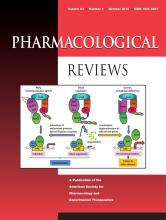Abstract
The phosphoinositide 3-kinase/mammalian target of rapamycin/protein kinase B (PI3K/mTOR/Akt) signaling pathway is central to a plethora of cellular mechanisms in a wide variety of cells including leukocytes. Perturbation of this signaling cascade is implicated in inflammatory and autoimmune disorders as well as hematological malignancies. Proteins within the PI3K/mTOR/Akt pathway therefore represent attractive targets for therapeutic intervention. There has been a remarkable evolution of PI3K inhibitors in the past 20 years from the early chemical tool compounds to drugs that are showing promise as anticancer agents in clinical trials. The use of animal models and pharmacological tools has expanded our knowledge about the contribution of individual class I PI3K isoforms to immune cell function. In addition, class II and III PI3K isoforms are emerging as nonredundant regulators of immune cell signaling revealing potentially novel targets for disease treatment. Further complexity is added to the PI3K/mTOR/Akt pathway by a number of novel signaling inputs and feedback mechanisms. These can present either caveats or opportunities for novel drug targets. Here, we consider recent advances in 1) our understanding of the contribution of individual PI3K isoforms to immune cell function and their relevance to inflammatory/autoimmune diseases as well as lymphoma and 2) development of small molecules with which to inhibit the PI3K pathway. We also consider whether manipulating other proximal elements of the PI3K signaling cascade (such as class II and III PI3Ks or lipid phosphatases) are likely to be successful in fighting off different immune diseases.
Footnotes
This article is available online at http://pharmrev.aspetjournals.org.
- © 2012 by The American Society for Pharmacology and Experimental Therapeutics
PharmRev articles become freely available 12 months after publication, and remain freely available for 5 years.Non-open access articles that fall outside this five year window are available only to institutional subscribers and current ASPET members, or through the article purchase feature at the bottom of the page.
|






